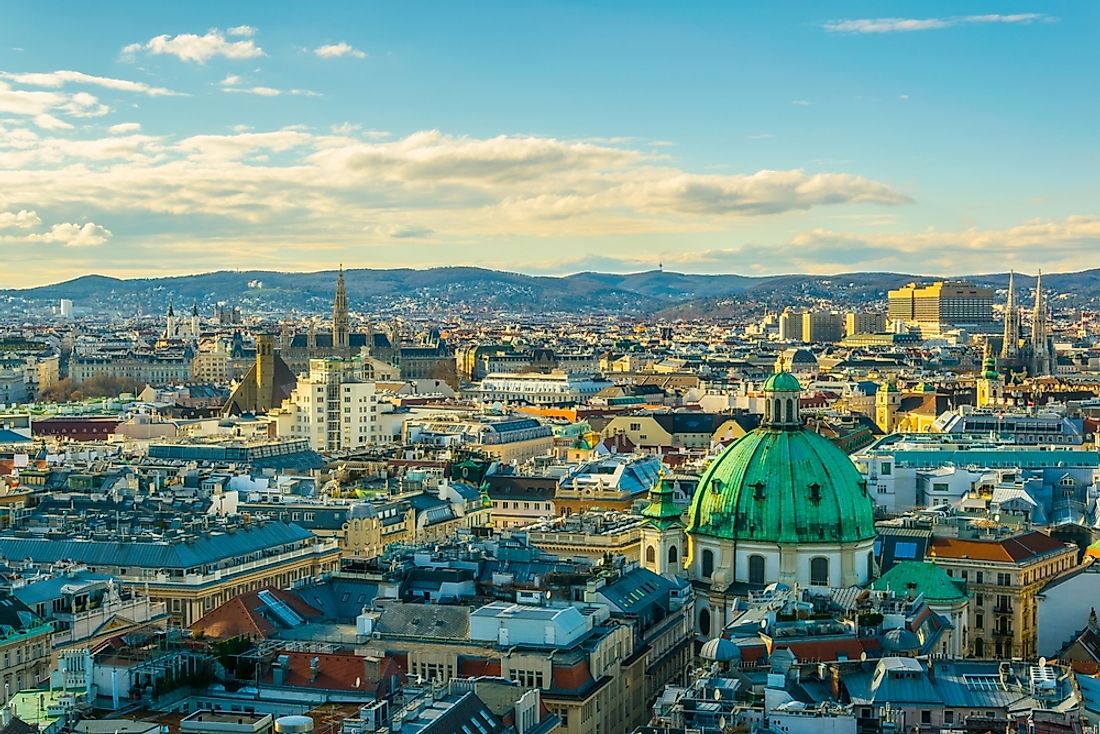What Is The Capital Of Austria?

Vienna is the capital city of the Austria and is also the largest city in the country with a population of 1.8 million people. The city is one of the most important cities in the European Union, hosting the headquarters of many international organizations. Vienna has a rich history and has fully embraced modernization. The city is famed for its high quality of life.
History Of Vienna
The city of Vienna has a rich history which is traced back to 500 BC when it was inhabited by the Celts. The city was later occupied by Romans who fortified it in 15 BC and named it Vindobona. Jewish historian, Josephus offers the earliest mention of the city in his records where he states that Herod Archelaus, the king of Judea, was banished to Vienna by Caesar. Vienna experienced tremendous growth in the 15th century after which it became the de facto capital of the Holy Roman Empire. During the early 19th century Napoleonic Wars, the Austrian Empire chose Vienna as the capital city. During the Second World War, Austria was invaded by Nazi-Germany led by Austrian-born Adolf Hitler. However, the Soviet Army combined with the American and British air forces drove the Nazis from Vienna. However, much of the infrastructure in the city was destroyed. In the aftermath of the war, Vienna was occupied by four countries comprised of the Soviet Union, France, the US and the UK.
Administrative Units And Government
In 1920, the constitution granted Vienna the status of a federal state. The city of Vienna is made up of 23 administrative areas known as districts. Each district’s residents elect representatives to the District Assembly. The head of the city is the Mayor who is also the governor of the state of Vienna and is deputized by the Vice-Mayor who is also the Vice-Governor. The mayor has several executives working under him who head various departments known as Executive City Councilors. Vienna as a federal province is entitled to have eleven representatives to the Federal Assembly also known as the Chamber of Provinces.
Economy And Infrastructure
Vienna has a growing economy which is spread across various industries. The city has a GRP (a city’s GDP equivalent) per capita of over $52,000 accounting for 25.7% of Austria’s GDP. The biggest industry is the service sector contributing about 85.5% of the city’s economy. The city is also an important regional and international hub, attracting increased foreign direct investments which are estimated to be 60% of the nation’s total. The city is also a popular host of international conventions and summits with 202 conferences being held in the city in 2014. The city has invested heavily in expanding the existing transport facilities, and its public transport system is quite popular with 53% of residents using it to commute. Vienna is also served by the Vienna International Airport which handles over 20 million passengers per year. The Rhine-Main-Danube Canal connects Vienna to Rotterdam and is one of the most important routes in water transport.
Tourism And City Attractions
Over 5 million tourists visit Vienna annually and are attracted by the many tourist sites in the city. The Schonbrunn Palace, a 300-year-old palace built by the Habsburg monarchy is the most popular attraction in the city attracting over 2 million visitors annually. The city is also home to the world’s oldest zoo, the Tiergarten Schonbrunn Zoo, which is visited by about 2 million tourists each year.







